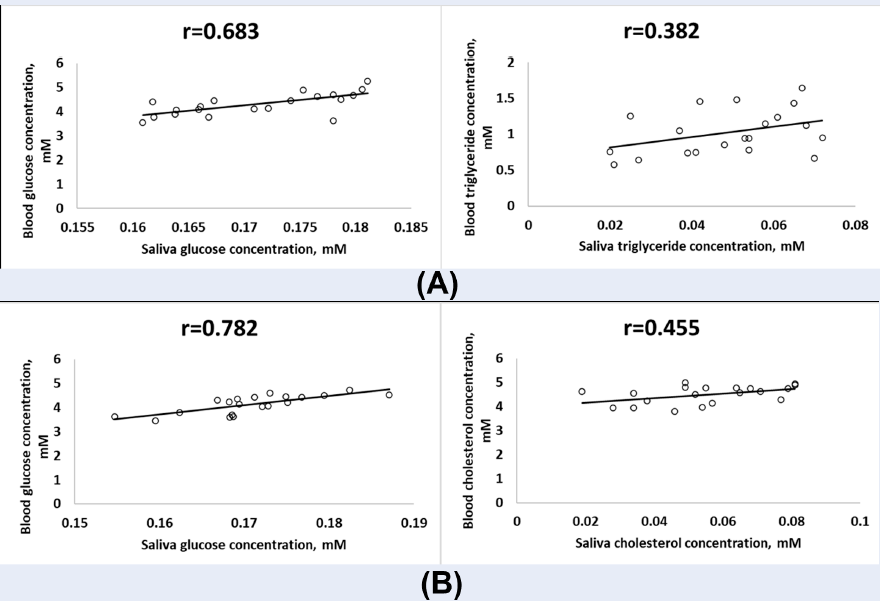Oxidative status, carbohydrate, and lipid metabolism indicators in saliva and blood serum of type 1 diabetes mellitus patients
DOI:
https://doi.org/10.15419/bmrat.v9i8.761Keywords:
chaperone-like activity, cholesterol, diabetes mellitus, oxidative stress, salivaAbstract
Introduction: Diabetes mellitus (DM) is an acute biomedical problem whose prevalence in the Russian Federation and elsewhere continues to rise. Regular blood glucose monitoring in patients with DM requires the identification of new approaches for the non-invasive assessment of glycemic parameters. Previous studies assessing the relationship between the biochemical composition of saliva and blood plasma found saliva suitable for DM monitoring. In this study, we assessed correlations between oxidative status and carbohydrate and lipid metabolism indicators in saliva and blood serum of patients with type 1 DM (T1DM).
Methods: We included 80 adults, 40 T1DM patients divided equally into two sex-defined subgroups, 20 men (mean age 43.7 +/- 3.21) and 20 women (42.05 +/- 2.66), and 40 ostensibly healthy individuals, 20 men (41.05 +/- 3.54) and 20 women (43.35 +/- 3.18). Mixed saliva was collected on an empty stomach in the morning, and its glucose, triglyceride, cholesterol, and total protein concentrations were determined. Oxidative status was determined based on biochemiluminescence (BCL) parameters. The chaperone-like activity of saliva was assessed using a model test system based on insulin aggregation suppression.
Results: We found a positive correlation between biochemical parameters in saliva and blood serum and between BCL parameters, chaperone-like activity, and blood glucose level.
Conclusion: Our findings indicate that saliva can be used as a biomaterial for diagnosing and monitoring the T1DM treatment efficiency.

Published
Issue
Section
License
Copyright The Author(s) 2017. This article is published with open access by BioMedPress. This article is distributed under the terms of the Creative Commons Attribution License (CC-BY 4.0) which permits any use, distribution, and reproduction in any medium, provided the original author(s) and the source are credited.
